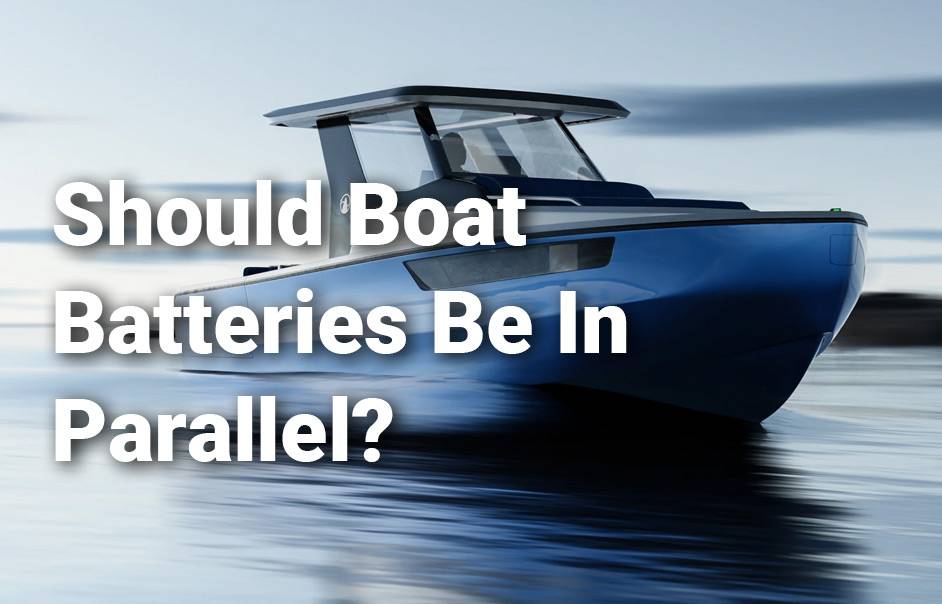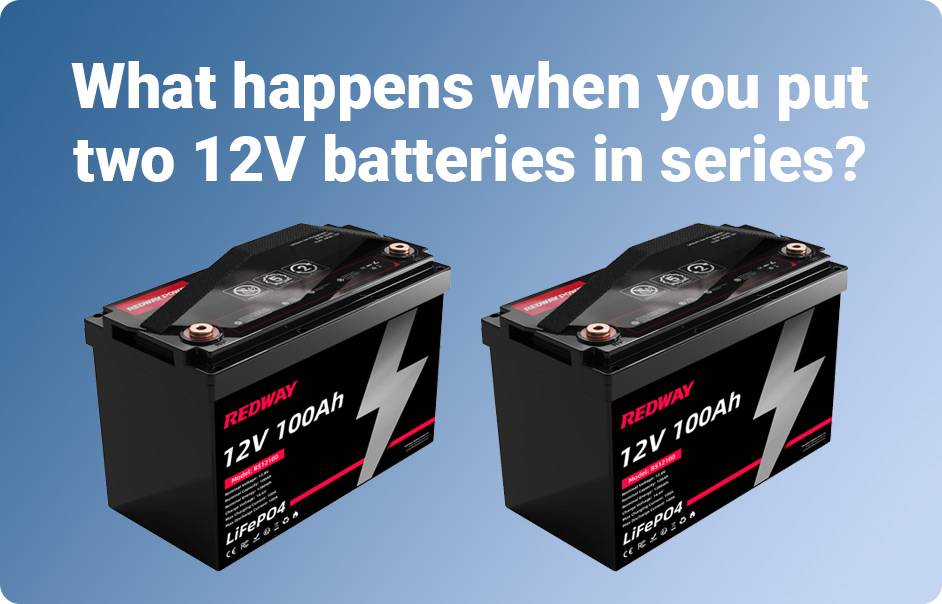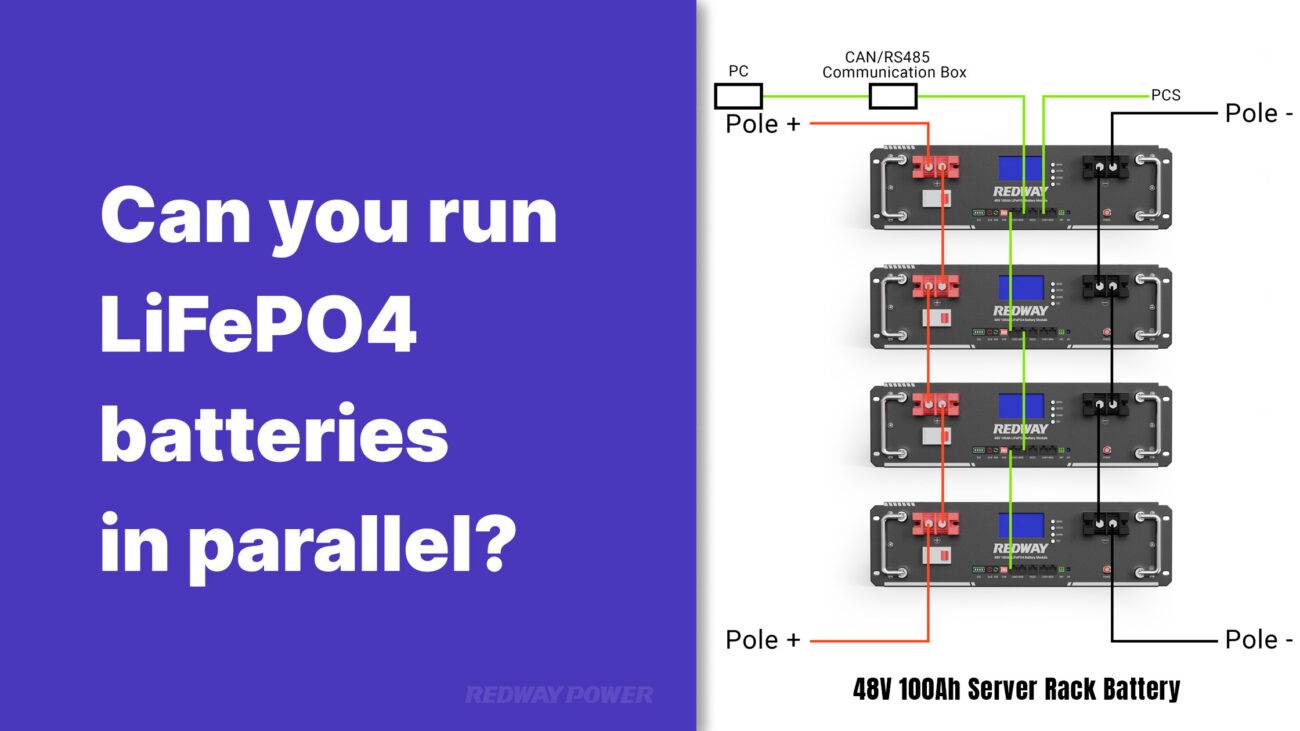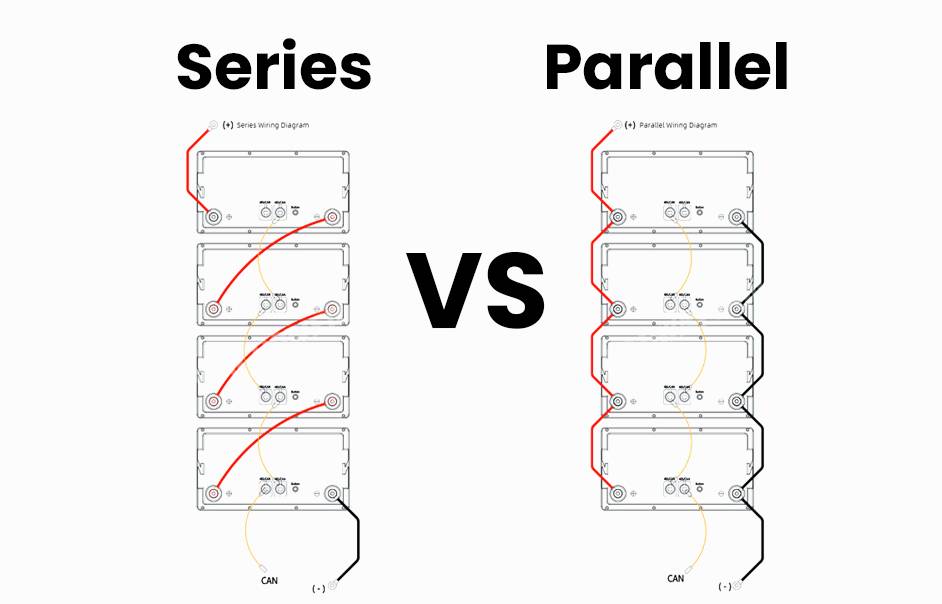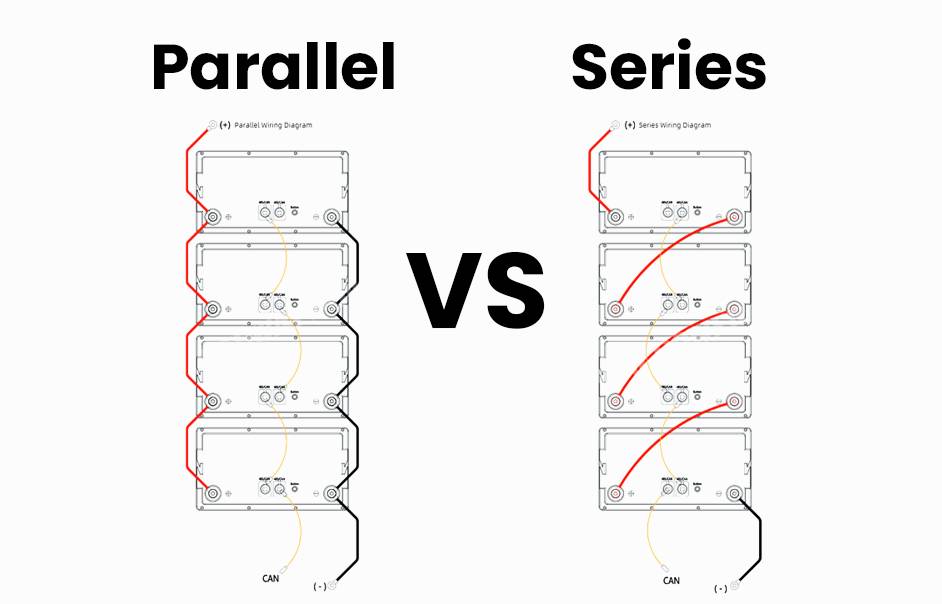Boat batteries can be connected in parallel for general applications, providing a simple wiring setup and a common voltage. This boosts the amp-hour capacity of the batteries. However, for large applications requiring high power output beyond 3000 watts, using higher voltage series connections might be more suitable. It’s important to consider the specific power needs and consult the manufacturer’s guidelines for the best wiring configuration.
Also check:
Wiring Batteries in Series vs Parallel, Which is Better?
Should Boat Batteries Be In Parallel?
RV Solar Panels, All You Need to Know
Solar Panel Series vs Parallel: Which is Better?
Understanding Boat Batteries
Boat batteries come in different types, such as engine start batteries and deep-cycle batteries. Engine start batteries provide the initial power to start the boat’s engine, while deep-cycle batteries offer long-lasting power. It is important to understand the battery capacity, measured in ampere-hours (Ah), and follow proper charging and maintenance procedures for optimal performance.
Parallel vs. Series Connections
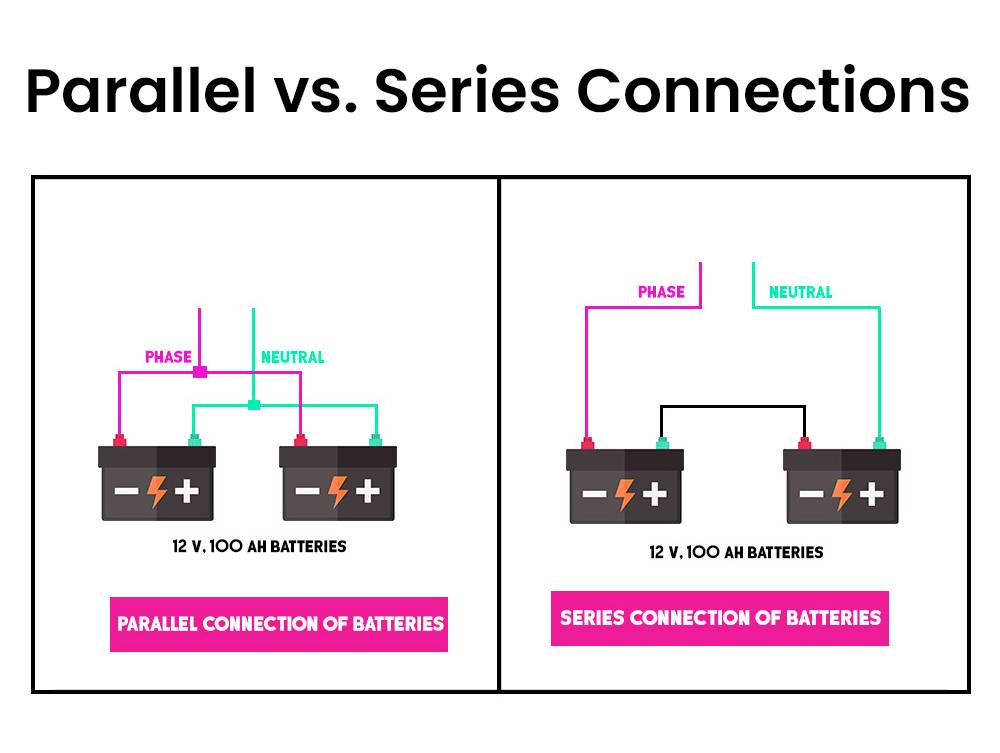
Advantages and Disadvantages of Parallel Connections
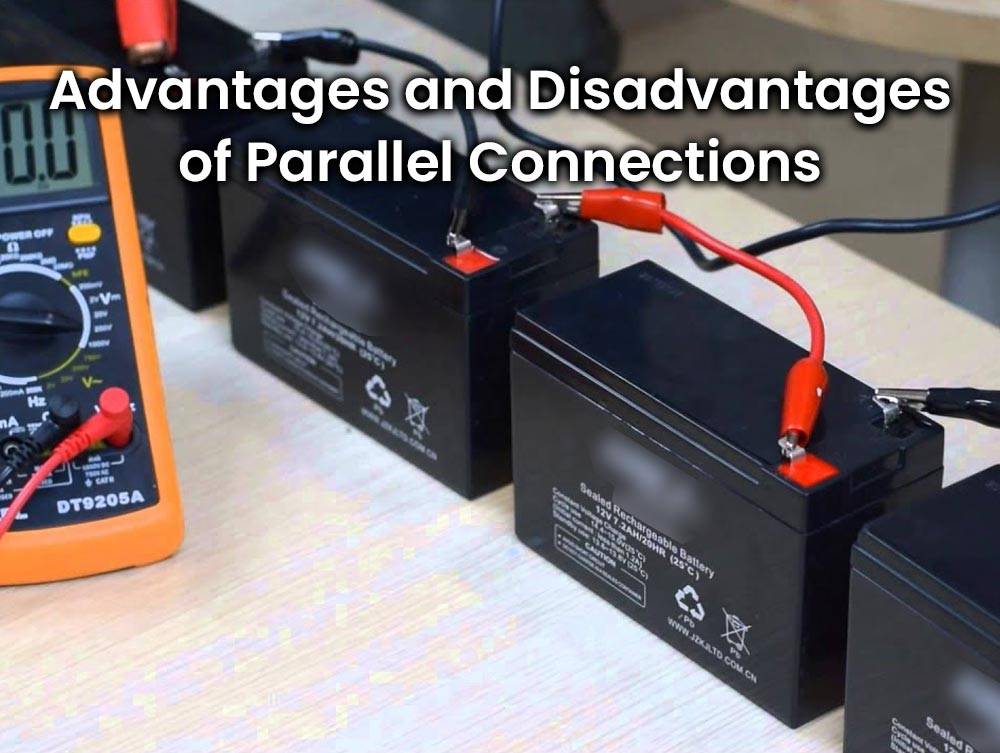
Safety Considerations with Parallel Connections
Prioritize safety with boat batteries and understand crucial considerations for parallel connections. Battery Compatibility: Ensure batteries connected in parallel are of the same type, age, and capacity. Mixing different types or capacities may lead to imbalances, damage, or fire hazards. Balanced Charging: Regularly monitor and balance the charge levels of each battery to maintain optimal performance. Proper Wiring and Insulation: Use appropriate wiring, connectors, and insulation materials to prevent short circuits and reduce electrical hazards.
- Battery Compatibility:
- Ensure batteries connected in parallel are of the same type, age, and capacity.
- Mixing different types or capacities may lead to imbalances, damage, or fire hazards.
- Secure Connections:
- Ensure all connections are secure and properly insulated to prevent electrical shorts or sparks.
- Loose or exposed wires can impact battery performance and pose risks.
- Regular Maintenance:
- Regularly check for corrosion on terminals and keep them clean and tight.
- Monitor electrolyte levels, especially for flooded lead-acid batteries.
- Ventilation:
- Maintain proper ventilation in the battery compartment to prevent the build-up of flammable hydrogen gas.
- Protective Devices:
- Use appropriate fuses or circuit breakers between each parallel-connected battery.
- Prevent excessive current flow during faults or malfunctions.
By adhering to these safety measures and taking necessary precautions, you ensure safer boating experiences and maximize your power supply on board. Safe sailing!
When to Use Parallel Connections for Boat Batteries
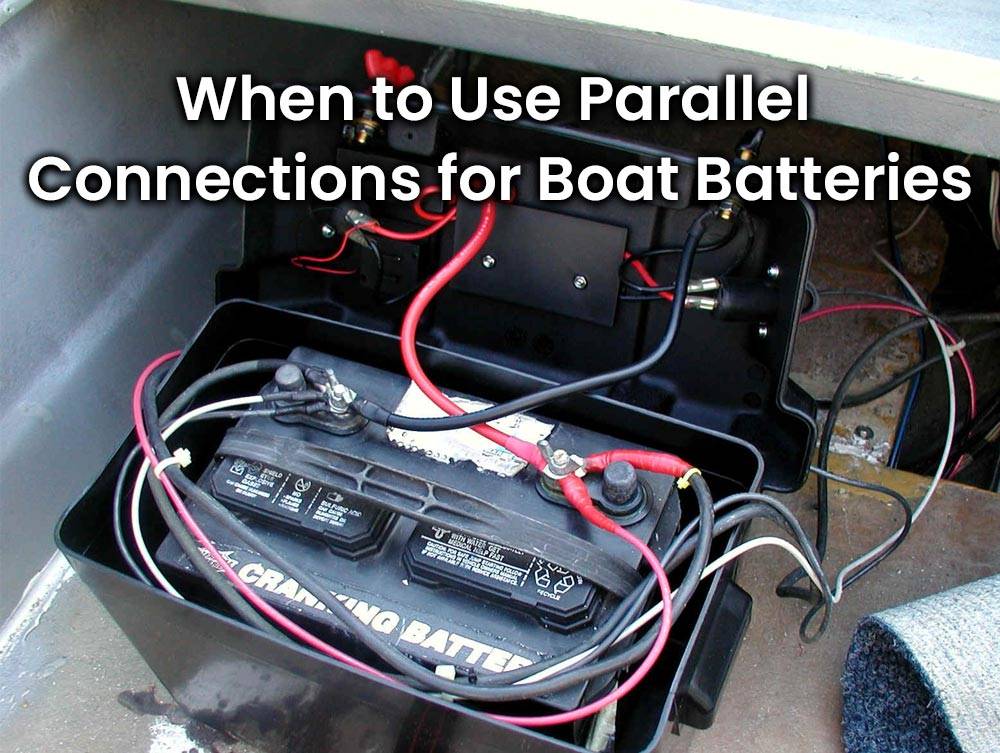
Knowing when to use parallel connections depends on increased power requirements, redundancy needs, weight distribution concerns, and space availability. Assess your specific boating needs and consult with experts for reliable electrical systems on your vessel! Safe and smooth sailing!
Alternatives to Parallel Connections
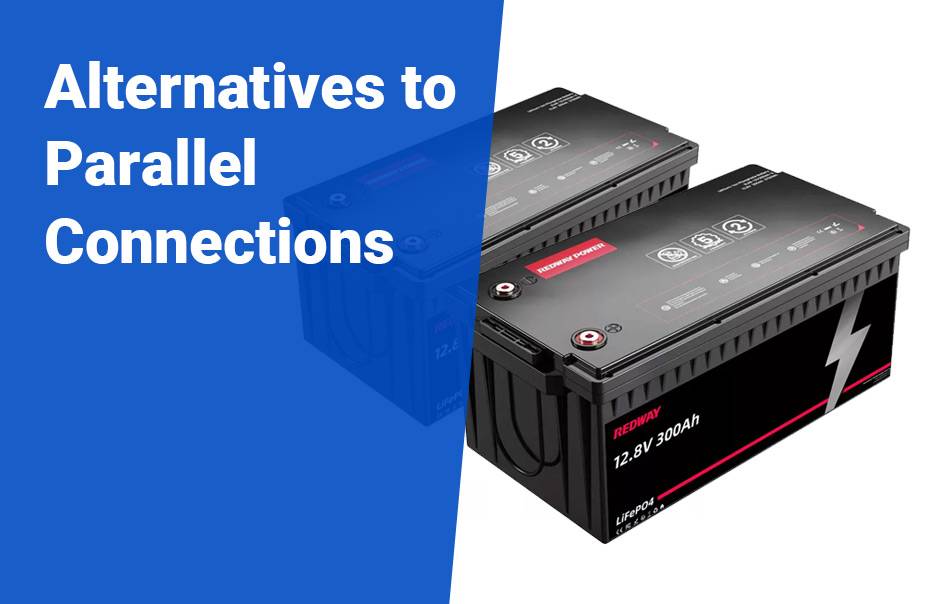
FAQs: Series vs. Parallel Battery Connections
What happens if you connect batteries in parallel?
When batteries are connected in parallel, their positive terminals are joined together with a wire, and their negative terminals are joined together with another wire. This configuration increases the amp hour capacity of the batteries while keeping the voltage the same. For example, two 6-volt 4.5 Ah batteries connected in parallel will provide 6 volts at 9 amp hours (4.5 Ah + 4.5 Ah). By connecting batteries in parallel, you can increase the overall capacity of the battery bank without changing the voltage. This is useful when you need to power devices that require higher capacity or longer runtimes.
Will two batteries in parallel last longer than one?
Connecting two batteries in parallel can potentially extend their lifespan. By doing so, the total current capacity is increased while maintaining the same voltage. This means that each battery shares the load, preventing them from overworking and potentially prolonging their lifespan. However, it is crucial to use batteries of the same type, voltage, and capacity to avoid imbalances and potential issues. By connecting batteries in parallel, you can potentially enjoy longer-lasting power for your devices or systems.
Do batteries in parallel drain equally?
When batteries are connected in parallel, they should ideally drain equally, assuming they have the same characteristics. However, slight variations in internal resistance or capacity can lead to uneven discharge rates. Factors such as differences in battery age, temperature, or usage can also contribute to unequal draining. To ensure balanced operation, it is important to use batteries with similar specifications, including voltage, capacity, and type. Regular monitoring of battery performance can help identify any imbalances and address them promptly. By using parallel connections and maintaining balanced battery draining, you can optimize the overall performance and longevity of your battery system.
How to charge two 12V batteries in parallel?
To charge two 12-volt batteries in parallel, follow these steps: (1) Ensure both batteries have similar capacities and types. (2) Connect the positive terminal of one battery to the positive terminal of the other battery using a cable. Connect the negative terminals in the same way. (3) Attach a suitable charger to one of the batteries. (4) Start the charging process, monitoring the batteries’ voltage and connections. (5) Regularly check and maintain the batteries and connections for optimal performance.
Does connecting batteries in parallel increase amp hours?
- Yes. Parallel connections boost the amp-hour capacity of batteries while maintaining voltage. For example, two 12V 100Ah batteries in parallel create a 12V system with 200Ah.
What happens when you put two 12-volt batteries in series?
- When batteries are in series, voltage increases to 24V while amps remain constant. However, in parallel, amps increase while maintaining a 12V system.
Do batteries last longer in series or parallel?
- Batteries last longer in parallel due to increased amp capacity. In series, voltage rises, but capacity (Ah) remains unchanged.
Can you put Lifepo4 batteries in series?
- Compatibility varies among Lifepo4 batteries. Ionic lithium batteries often support series connections, but it’s essential to check the user manual for compatibility.
Which is more powerful, series, or parallel?
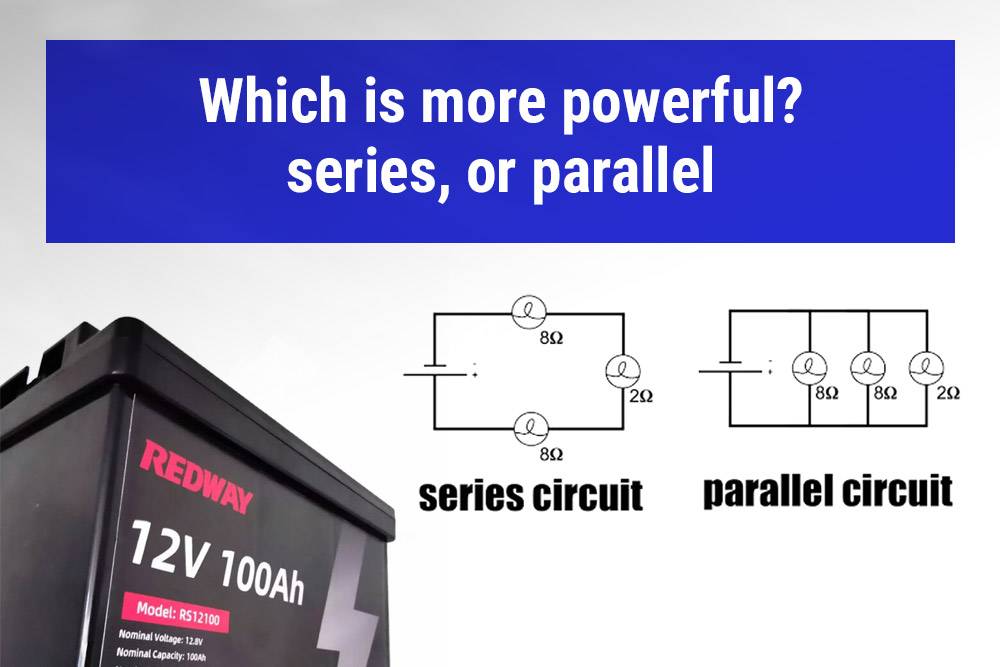
- Parallel circuits consume more power compared to series circuits with the same voltage.
Is series or parallel safer?
- Both series and parallel connections are generally safe, with voltage being the primary safety concern.
More FAQs
What does a series-parallel connection of batteries achieve?
A series-parallel connection combines the benefits of both series and parallel configurations, allowing for increased voltage and capacity. It enables a higher total voltage output while maintaining a larger capacity and longer run time, accommodating higher power demands and extending battery life.
What does it mean to connect batteries in series, parallel, and series-parallel?
- Series: Batteries are connected end-to-end, increasing the total voltage while keeping the capacity the same.
- Parallel: Batteries are connected side-by-side, increasing the total capacity while keeping the voltage the same.
- Series-Parallel: A combination of both, increasing voltage and capacity to meet specific power needs.
How do you configure a series-parallel battery connection?
To configure a series-parallel connection, first, connect batteries in series to achieve the desired voltage. Then, connect these series strings in parallel to increase the overall capacity. Ensure each series string has the same number of batteries and that all connections are secure and balanced.
Why would you want to connect two or more batteries together?
Connecting multiple batteries together increases total voltage or capacity to meet specific energy requirements. This setup provides longer run times, higher power output, and can improve system reliability by distributing load and enhancing overall performance.
What types of lithium batteries can be connected in series or parallel?
Most lithium-ion batteries, including lithium iron phosphate (LiFePO4) and lithium nickel manganese cobalt oxide (NMC), can be connected in series or parallel. Ensure that all batteries are of the same type, capacity, and voltage for optimal performance and safety.
How do you connect a group of batteries in series?
To connect batteries in series, link the positive terminal of one battery to the negative terminal of the next. Continue this pattern for the entire group. The total voltage is the sum of the individual battery voltages, while the capacity remains the same as one battery.
How do you configure batteries with a series connection?
In a series configuration, connect the positive terminal of the first battery to the negative terminal of the next. Repeat this process until all batteries are connected. The combined voltage is the sum of all batteries, and the capacity is the same as a single battery.
What should you do for high current applications when connecting batteries in parallel?
For high current applications, use batteries with the same capacity and state of charge. Ensure all connections are robust and use thick, low-resistance cables to handle the high current. Regularly check connections and battery temperatures to prevent overheating and ensure safety.
What are the requirements for batteries to be connected in parallel?
Batteries connected in parallel should have the same voltage and similar capacity to ensure balanced charging and discharging. All batteries should be at the same state of charge before connection to avoid imbalances and potential damage.
What precautions should you take when connecting batteries in series?
Ensure all batteries are of the same type, age, and capacity. Verify correct polarity to avoid short circuits. Regularly monitor for imbalances and check for proper connections to prevent overcharging or deep discharging, which can affect battery life and safety.

